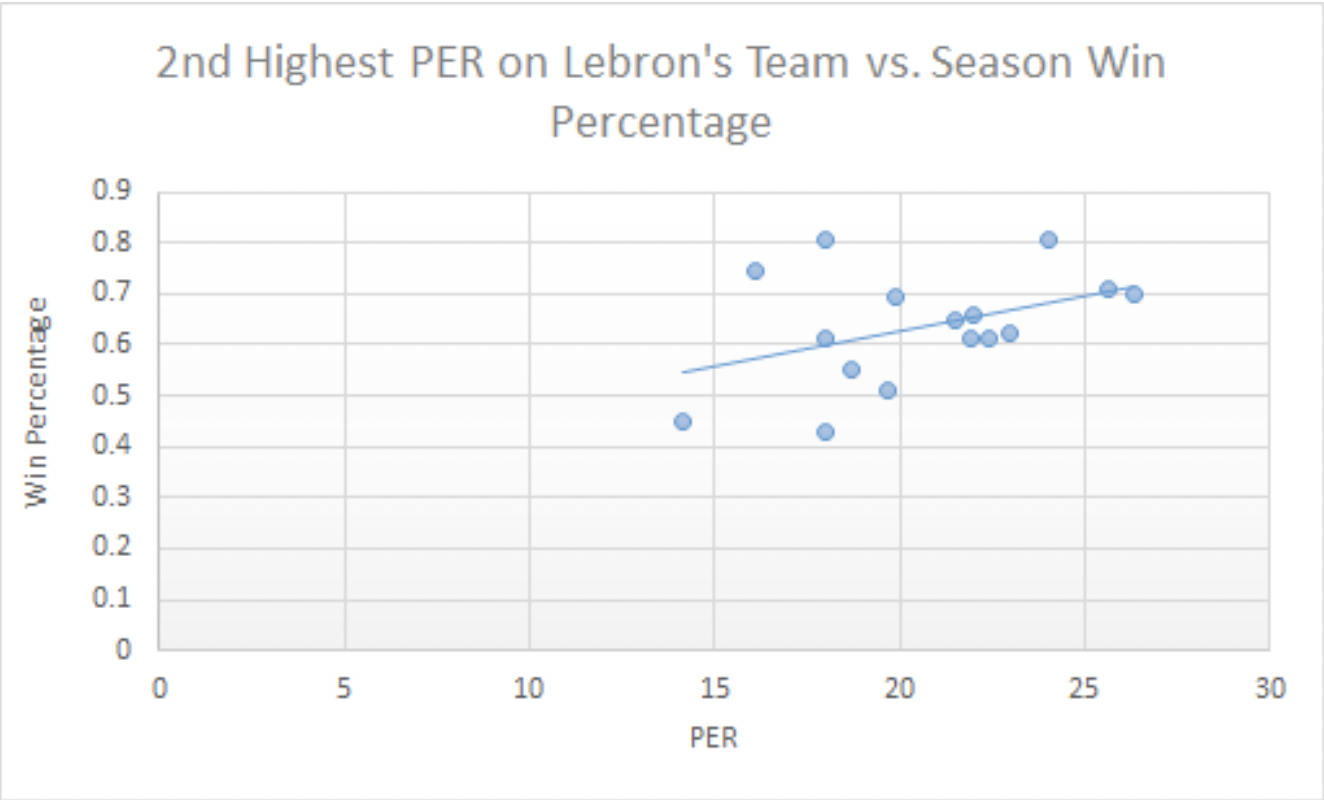LeBron James is Still Human: Why the Lakers are Missing the Playoffs
By Albert Zhu | April 28, 2019

For the first time in fourteen years, LeBron James will not be in the playoffs. Coming off of eight straight NBA Finals appearances, most people believed that LeBron would be able to lead the Lakers to at least a playoff appearance in his first year, with some even predicting a conference finals berth. But not many expected this: a season of turmoil and a disappointing tenth place berth in the conference with no chance to be in the playoffs. As is often the case with LeBron James-led teams, this year’s Lakers suffered through loads of midseason drama and trade rumors, but in terms of on-court results, who is to blame for the Lakers’ underperformance: LeBron or his teammates? Is the competition finally catching up to LeBron, or are his teammates to blame? Did the Lakers miss the playoffs due to LeBron’s underperformance and declining production, or due to the incompetence of his teammates relative to previous years?
Let’s look first at LeBron himself. This season, he’s leading the Lakers in usage (a metric of the percentage of a team’s plays used by a certain player while he was on the floor) at 31.6% while averaging an impressive 27.4 points, 8.5 rebounds, and 8.3 assists. In addition, LeBron this season is averaging the highest percentage of shots taken as three-pointers in his whole career, while having the lowest percentage of assisted three-point attempts since ‘09-10 and shooting a respectable 33.9% to go along with a 58.8 TS% (True Shooting Percentage) and 25.7 PER (Player Efficiency Rating). While the conventional stats suggest that LeBron is playing as well as ever, the advanced stats offer a bit more perspective. Compared across every year of his career, LeBron’s BPM and VORP this year suggest that he is beginning to decline:

As shown by the data, this season LeBron is producing his lowest BPM (8) since 2012 and his lowest VORP (4.9) since his rookie year. BPM and VORP are meant to measure the overall point difference that an individual player produces while on the floor, and LeBron’s decline in these two metrics suggest that while he’s still dominating the game individually, his team is scoring less points and giving up more points with him on the court than before, leading to less wins. Overall, the data shows that LeBron has maintained his performance in most aspects while declining in a few. However, LeBron’s decline in BPM and VORP are not large enough to be the sole reason for the fall from eight straight Finals to missing the playoffs. In order to fully examine the question, the discussion now shifts to LeBron’s Laker teammates. Did the Lakers perform worse than expected because LeBron had less talented teammates than his previous successful teams? Adding the VORP of all of LeBron’s teammates each year, then taking the average combined VORP over multiple years of LeBron’s teams (‘03-10 Cleveland Cavaliers, ‘10-14 Miami Heat, ‘14-18 Cleveland Cavaliers, ‘18-19 LA Lakers), the data shows that Lebron’s teammates this season have the lowest Average Combined VORP out of his four teams:

As shown by the data, the Average Combined VORP of Lebron’s Laker teammates this season is much lower than the averages of his Heat teammates or his Cavalier teammates from either decade. This shows that while LeBron himself is generating less points over a replacement player, his teammates are also giving him less help than ever before. Comparing other metrics between the four teams, the ‘10-14 Heat and ‘14-18 Cavaliers were ranked top 5 league-wide in 3FG% and FG% every season with LeBron, consistently generating open shots by placing shooters and experienced veterans around LeBron. While the ‘03-10 Cavaliers were less dangerous on offense, they had a stifling defense behind LeBron and Zydrunas Ilgauskas, ranking top 3 in Offensive Rebounds/Game and Defensive Rebounds/Game and top 5 in Defensive Rating every season following Lebron’s rookie year. On the other hand, the Lakers are not top ranked in offense nor defense. They are 29th league-wide in 3FG%, 29th in FT%, 28th in TOV% (Turnover Percentage), and 23rd and 12th in Offensive Rating and Defensive Rating, respectively. Another trend that must be considered is the presence of other proven stars playing alongside LeBron. When LeBron made eight straight NBA Finals appearances with the Heat and Cavaliers, he played with four perennial all-stars in Dwayne Wade, Chris Bosh, Kyrie Irving, and Kevin Love. This year’s Lakers team, although filled with young and promising players, has zero current all-stars. By taking the 2nd highest PER (excluding players who played less than 1600 minutes) on each of LeBron’s teams and plotting it against that teams’ season win percentage, there is an association between a higher 2nd leading PER and a higher win percentage:

As shown by the data, this year’s Lakers have the lowest 2nd leading PER (14.1, Kyle Kuzma) and the 2nd lowest win percentage. This association shows that when LeBron’s teams are more successful when he has an efficient and consistent 2nd star. Although the Lakers tried to surround LeBron with a mix of young talent - Kuzma, Ingram, Ball - and veteran experience - Rondo, Stephenson, Beasley, none of them were effective enough or consistent enough to provide LeBron enough support to make the playoffs.





